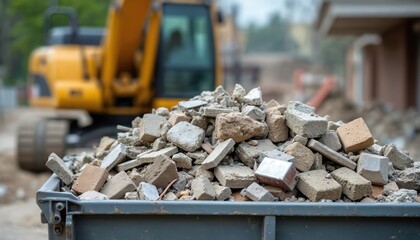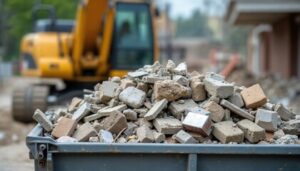Replacement Windows Potomac is a big project. It’s important to find a contractor that offers accurate measurements and a clear estimate of the cost of your new windows.
The right windows provide a durabe barrier between indoors and out. If you have old, leaky windows with condensation between the glass panes or rotting frames, it’s time for an upgrade.
Windows make up a substantial portion of your home’s overall cost and are an investment. That’s why it is important to establish a budget before you begin the project. This will help you avoid spending more than you can afford and ensure that the windows you choose will meet your functional and aesthetic requirements.
When it comes to the upfront cost of replacement windows, the exact price tag can vary significantly depending on a variety of factors. The window type and material, for instance, have a direct impact on initial costs and durability. Vinyl windows, for example, are an affordable option with long-term energy efficiency benefits and low maintenance needs. Wood windows, on the other hand, provide classic style and elegance, but require more frequent care.
Window size and design also impact pricing. Bay and bow windows, for example, are more costly than standard double-hung windows. And, specialty shapes like casement windows and awning windows can increase the price tag even further.
Your location is also a major factor in determining window replacement prices. Different regions experience unique climatic conditions that influence energy efficiency, insulation capabilities, and other factors. Additionally, local building codes might necessitate special features, such as hurricane-resistant glass.
Choosing the right replacement windows is an investment that will improve your home’s energy efficiency, comfort, and resale value. It is best to begin with problem windows and prioritize based on function and safety. This will help to avoid any additional costs and potential problems down the road, such as leaking water or insufficient heat. The upfront cost of replacement windows may seem high, but the long-term savings on energy and utility bills will offset this expense.
Style
When deciding on a window style, it is important to balance function and aesthetics. The right windows will offer both, along with increased energy efficiency and a higher resale value.
There are a wide range of replacement windows to choose from. Each type offers unique benefits that make it ideal for a specific home design or renovation project.
Double hung windows are the most popular replacement window style in America. They have an upper and lower window sash that move up and down separately, with each sash capable of tilting inward for easy cleaning. This makes them an excellent choice for second-story windows.
Casement windows have a hinge on the side and open outward with a hand crank. This allows for more air flow and visibility, making it an ideal choice for hard-to-reach areas. They are also considered the most energy efficient operable window.
Picture windows are expansive glass windows that provide unobstructed views of your home’s exterior and landscape. They are ideal for upgrading homes without requiring major construction work, and can enhance the look of any room.
Sliding windows feature slim vertical lines that are a great fit for any architectural design. These windows are easy to clean and offer increased ventilation. They are available in two- or three-lite configurations, with reinforced sashes that glide smoothly and open left or right.
Bay and bow windows are perfect for bringing in natural light and adding a sense of grandeur to any home. These windows are customizable with a variety of colors, trims, and hardware options to create the perfect fit for your home. They can also be upgraded with energy-efficient glazing to help reduce heating and cooling costs.
Functionality
Modern replacement windows are designed to be energy efficient, improving both your home comfort and its curb appeal. These windows often feature advanced sealing and insulation technologies, helping you to minimize condensation buildup and maintaining a more stable indoor temperature. This helps to reduce your energy consumption, cutting down your utility bills and lowering your carbon footprint.
Additionally, modern window design often includes soundproofing features that help to keep outside noise at a minimum and create a quieter environment inside your home. They also come with UV-blocking coatings, preventing harmful ultraviolet rays from damaging your furniture and other interior decorations over time.
Drafty windows allow cold air to seep into your home in the winter and hot air to infiltrate during the summer, forcing your HVAC system to work harder to maintain a comfortable indoor climate. This increases your energy consumption and shortens the lifespan of your heating and cooling equipment. Replacement windows help to eliminate drafts by utilizing energy-efficient materials like Low-E glass and multi-pane insulation that reduce heat transfer. Advanced seals and weatherproofing also prevent air leakage, boosting your home’s energy efficiency.
Choosing the right replacement window can be a challenging task. There are two primary window upgrade options available: full frame replacement windows and window inserts. Both provide unique advantages, but the decision depends on your specific situation and goals.
Full frame replacement windows replace the entire window opening, including the frame, while inserts simply replace the sash (the sliding or fixed part that contains the glass). Because full-frame replacement windows require more extensive structural changes, they are usually more costly than their counterpart. However, they do offer superior performance and are perfect for homes with existing frames that are in good condition.
Durability
When thinking about replacement windows, homeowners often wonder about how long they will last. Different materials have their own lifespans, but a good way to gauge durability is by looking at the warranty that comes with each brand. For example, Sunrise Windows offers a lifetime warranty on all of their products. This shows that they have confidence in the quality of their windows and are willing to stand by them.
A window’s lifespan also depends on the level of maintenance that is required. Many homeowners are surprised to learn that regular cleaning and regular application of sealant can significantly increase a window’s lifespan. Another factor is the frequency of use. Windows that are opened and closed more frequently will have more wear and tear on latches, tracks, and sashes than those that are operated infrequently.
The durability of a replacement window also depends on the type of frame that is used. Vinyl is one of the most popular options for a new window because it’s affordable, weather-resistant, and highly insulating. However, it can crack or warp due to temperature fluctuations and may need replacing after a few decades.
Fiberglass frames, on the other hand, are incredibly durable. They are also a great choice for cold and warm climates because they don’t expand or contract as much as other materials. They are also more resistant to corrosive substances and can last 30 to 50 years.
Wood is a natural material that looks beautiful and offers classic appeal. However, it requires regular maintenance and is susceptible to rot and insect damage. Wood windows usually last 10-20 years, but they will need to be replaced earlier if they are not regularly maintained.
Local Climate
Whether your home is in an urban or suburban setting, the local climate can have a significant impact on the comfort and energy efficiency of your property. Understanding the unique weather conditions in your area can help you choose the right replacement windows to maximize your home’s performance and improve its value.
In colder climates, you’ll want to prioritize windows that prevent heat loss while keeping your home warm in winter. Similarly, homes in warmer climates can benefit from windows that block UV rays and prevent heat gain in summer. In addition, you’ll want to consider frame materials that can withstand the weather in your region. Wood offers a classic aesthetic and ideal insulation, vinyl is affordable and low-maintenance, and composite material like Fiberglass is durable and energy-efficient.
When choosing a window, you’ll also want to consider the U-factor and solar heat gain coefficient (SHGC). The U-factor measures the windows ability to retain heat while SHGC indicates how well it absorbs and transmits sunlight. A window with a high U-factor and low SHGC will be more appropriate for cold climates while a window with a lower U-factor and higher SHGC will be more suitable for hot climates.
Upgrading to energy-efficient replacement windows is a smart investment that can yield substantial long-term savings on your utility bills. In addition, these windows can reduce carbon emissions and create a more sustainable living environment. However, the initial costs of energy-efficient windows can be high compared to traditional models. Therefore, it is important to carefully evaluate your budget and identify your long-term goals before making a purchase. This will ensure you choose the right windows that fit your needs while maximizing the return on your investment.

